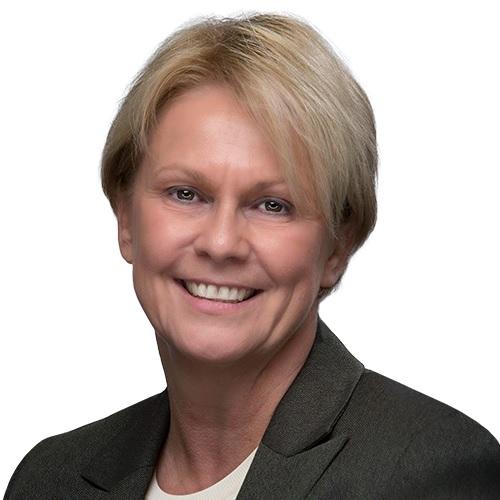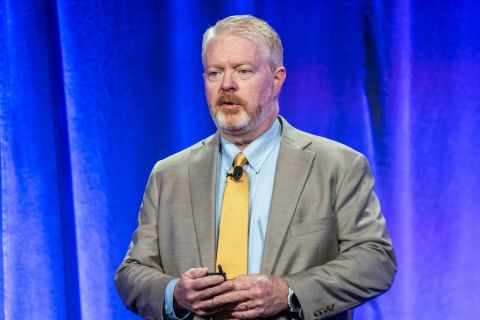LONDON – In the spring of 2019, Occidental Petroleum and Chevron Corp. engaged in a bare knuckles bidding war for Anadarko Petroleum Corp.
Occidental eventually came out on top, but the win smelled of a pyrrhic victory to critics. Occidental paid $38 billion and assumed $46 billion in debt to snatch Anadarko from Chevron’s jaws.
Some analysts and investors knocked Occidental CEO Vicki Hollub and her team for chasing Anadarko with “a great degree of hubris and management ego.” Others cheered Chevron for “winning by not overpaying.” And activist investor Carl Ichan filed suit to stop the “misguided” deal, alleged Occidental’s leadership was in over its heads, making “numerous blunders” that “might continue to trip over their feet if the board is not strengthened.”
Four years later, Hollub has quieted the doubters, captaining Occidental to a $58.8 billion market capitalization and closing in on paying off the acquisition in half a decade.

This week, Hollub was named the energy executive of the year at the Energy Intelligence Forum 2023. Appearing at the forum on Oct. 18, Hollub credited the Anadarko deal as the primary reason she was honored.
Asked by a moderator where Occidental would be without successfully acquiring Anadarko, Hollub replied she didn’t even want to think about it.
“Would you be sitting here with us today?” the moderator asked.
Motioning toward the audience, Hollub said, “I wouldn't even be sitting out there, I don't think.”
Prior to the deal, Occidental had been closely evaluating Anadarko for three years before locking horns with Chevron, which initially offered $33 billion for the multi-basin player.
Hollub conceded that Occidental actually underestimated Anadarko’s assets.
“What we knew was [that] their subsurface rocks in the Permian Basin were, we thought, as good as our Southeast New Mexico [assets] and around the same level of inventory,” she said. “But what we've discovered since is that that was not exactly right. The Anadarko subsurface was actually better than our Southeast New Mexico. So we knew that pairing that with what we had would give us, if not the best, one of the top two best positions in the Delaware Basin and the Permian.”
Occidental pursued Anadarko, Hollub said, as the company looked to shift its dependence away from international oil and gas sources and add more stability and certainty in its upstream operations, she said. Along with the Permian, Anadarko’s assets included a position in the Denver-Julesburg Basin and offshore Gulf of Mexico.
“The combination of those three converted us from a company that was 50% oil and gas internationally to 80% oil and gas domestically,” she said. “And so we changed our risk profile with quality assets. We then were able to focus on the core areas internationally where we feel like we have an advantage from a core competence standpoint. And to me, it's always about making sure [that] the assets you have fit with your core competence, your core capability and that you have a competitive advantage in the assets that you have.”
Since closing the deal in August 2019, Occidental’s promised $2 billion of synergies per year has been exceeded by the company’s team, Hollub said. And the company expects finish paying off the acquisition in a little over five years.
“And that's not counting the future net present value that will remain because there's a lot of inventory that will remain beyond that five years,” she said. “So, for us, it was a transformational acquisition.”
Hollub added that during the COVID-19 pandemic, and specifically second-quarter 2020, others might have considered that the “worst time in the world for the acquisition.”
“Actually during that second quarter of 2020, the Anadarko assets carried us through that,” she said. “Had we been an OXY standalone, it would've been a tougher scenario for us. So we were happy with the asset and the OXY employees delivered more than expected from that. And so it gave us the footprint in the upstream oil and gas business that we need to continue to execute the rest of our strategy.”
Hollub also addressed the role Warren Buffett’s Berkshire Hathaway played in the deal, as well as his continued investments in Occidental. As of last year, Berkshire owns about 20% of the company and Buffett has federal approval to buy up to 50% of Occidental’s stock.
Hollub said that Buffett’s investments are based on his positive, bullish view on oil prices and because “he knows that our focus has been … to narrow down to the best possible assets.”
“If you don't have good assets, you're starting out behind the eight ball. You've got to have good assets and you should dispose of those that are not,” she said. “And so he knew we had done that and he has some of the same views toward managing and getting involved or not involved in the things that he invests in.”
Buffett believes in trusting and empowering employees to do the things they need to do.
“Warren Buffett just looks at performance,” Hollub said.
Direct air capture progresses
Hollub said the stability Occidental gained by buying Anadarko also aligned with the company’s low carbon ventures ambitions.
Hollub addressed Occidental’s ambitions to create net zero or net negative barrels of oil through direct air capture (DAC) technology.
The company is targeting capture costs of $150 per ton of CO2, although Hollub said that’s “what we’re targeting, but that’s not where we have to get to make this economical.”
Hollub noted that wind and solar proved economic within 10 years without the benefit of building a digital twin or “the computing power back then that we have today.”
“So our teams have already identified a number of ways to start reducing the cost of direct air capture,” she said, adding that every part of DAC is already employed in other industrial settings.
The innovation comes from optimizing each piece—such as radial fans—that a typical industrial site wouldn’t spend time trying to optimize.
“We're leaving no stone unturned,” Hollub said. “We're looking at everything and every idea.”
RELATED
ADNOC, Occidental Sign Deal to Evaluate Direct Air Capture Project in UAE
She said the need to speed innovation was part of the rationale for Occidental’s acquisition of Carbon Engineering in a $1.1 billion deal announced in August.
“They have an amazing company with incredible people, but we felt like they needed more people to accelerate this innovation. And so that was the reason for purchase. And now there's, at least the last time I looked, …. probably more than 30 ideas that we need to progress to make this cost down curve happen. But it is in progress.”
Recommended Reading
How Diversified Already Surpassed its 2030 Emissions Goals
2024-04-12 - Through Diversified Energy’s “aggressive” voluntary leak detection and repair program, the company has already hit its 2030 emission goal and is en route to 2040 targets, the company says.
BKV CEO Chris Kalnin says ‘Forgotten’ Barnett Ripe for Refracs
2024-04-02 - The Barnett Shale is “ripe for fracs” and offers opportunities to boost natural gas production to historic levels, BKV Corp. CEO and Founder Chris Kalnin said at the DUG GAS+ Conference and Expo.



